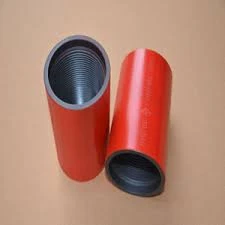- Afrikaans
- Albanian
- Amharic
- Arabic
- Armenian
- Azerbaijani
- Basque
- Belarusian
- Bengali
- Bosnian
- Bulgarian
- Catalan
- Cebuano
- Corsican
- Croatian
- Czech
- Danish
- Dutch
- English
- Esperanto
- Estonian
- Finnish
- French
- Frisian
- Galician
- Georgian
- German
- Greek
- Gujarati
- Haitian Creole
- hausa
- hawaiian
- Hebrew
- Hindi
- Miao
- Hungarian
- Icelandic
- igbo
- Indonesian
- irish
- Italian
- Japanese
- Javanese
- Kannada
- kazakh
- Khmer
- Rwandese
- Korean
- Kurdish
- Kyrgyz
- Lao
- Latin
- Latvian
- Lithuanian
- Luxembourgish
- Macedonian
- Malgashi
- Malay
- Malayalam
- Maltese
- Maori
- Marathi
- Mongolian
- Myanmar
- Nepali
- Norwegian
- Norwegian
- Occitan
- Pashto
- Persian
- Polish
- Portuguese
- Punjabi
- Romanian
- Russian
- Samoan
- Scottish Gaelic
- Serbian
- Sesotho
- Shona
- Sindhi
- Sinhala
- Slovak
- Slovenian
- Somali
- Spanish
- Sundanese
- Swahili
- Swedish
- Tagalog
- Tajik
- Tamil
- Tatar
- Telugu
- Thai
- Turkish
- Turkmen
- Ukrainian
- Urdu
- Uighur
- Uzbek
- Vietnamese
- Welsh
- Bantu
- Yiddish
- Yoruba
- Zulu
what are the differences between casing and tubing?
Understanding the Differences between Casing and Tubing in Oil and Gas Wells
In the oil and gas industry, the extraction of hydrocarbons from beneath the Earth’s surface is a complex process that necessitates various forms of infrastructure to ensure safe and efficient production. Two primary components of this infrastructure are casing and tubing, both of which play critical roles, but serve distinctly different purposes in the drilling and production process. Understanding these differences is crucial for engineers, geologists, and industry professionals involved in the exploration and production of oil and gas.
Casing The Structural Backbone
Casing is a series of steel pipes that are installed in the wellbore during the drilling process. The primary purpose of casing is to stabilize the wellbore walls, preventing them from collapsing due to surrounding geological pressure and conditions. It acts as a protective barrier between the well and the surrounding environment, minimizing contamination and ensuring that fluids produced from the reservoir do not leak into other subsurface formations.
The installation of casing involves several stages; after a well is drilled to a certain depth, the casing is lowered into the borehole and then cemented into place. This cementing process creates a strong bond between the casing and the wellbore, enhancing the structural integrity of the well. Casing comes in several types, including surface casing, intermediate casing, and production casing, each serving specific functions depending on the depth of the well and the characteristics of the geological formations encountered.
Tubing The Production Channel
On the other hand, tubing is a smaller diameter pipe that is inserted into the casing after the completion of the well. Its primary function is to transport the hydrocarbons extracted from the reservoir to the surface. The design of tubing is crucial as it must withstand higher pressure and temperature conditions, given its function in the production phase. Tubing is typically made of high-strength steel or other advanced materials and is available in various sizes and configurations depending on the production requirements.
Unlike casing, tubing is not cemented in place and can be removed or replaced as needed. This flexibility allows operators to enhance production efficiency, perform maintenance work, or manage different production situations. Because tubing is designed to streamline the flow of oil and gas, it often incorporates features such as perforations, which allow hydrocarbons to enter the tubing from the surrounding reservoir rock.
what are the differences between casing and tubing?

Key Differences
The differences between casing and tubing can be summarized as follows
1. Function Casing primarily serves as a structural support to prevent wellbore collapse and protect against environmental contamination, while tubing is specifically designed to transport hydrocarbons from the reservoir to the surface.
2. Installation Casing is cemented in place during the well drilling process, while tubing is inserted into the casing after the well is completed, allowing for flexibility in production management.
3. Size and Design Casing pipes are typically larger in diameter than tubing pipes, reflecting their differing roles and the structural requirements they must meet.
4. Material Strength Both casing and tubing are made from high-strength materials, but tubing is often designed to endure more extreme pressure and temperature conditions, reflecting its function in the production phase.
Conclusion
In summary, while casing and tubing are both essential components of oil and gas wells, they fulfill different roles within the well structure. Understanding the differences between these two types of pipes is crucial for ensuring the efficiency and safety of hydrocarbon extraction processes. As technology advances, the materials and designs of casing and tubing continue to evolve, opening new possibilities for optimization in oil and gas production. Therefore, it is imperative for professionals in the industry to remain informed about these developments to enhance their operational strategies.
-
Tubing Pup Joints: Essential Components for Oil and Gas OperationsNewsJul.10,2025
-
Pup Joints: Essential Components for Reliable Drilling OperationsNewsJul.10,2025
-
Pipe Couplings: Connecting Your World EfficientlyNewsJul.10,2025
-
Mastering Oilfield Operations with Quality Tubing and CasingNewsJul.10,2025
-
High-Quality Casing Couplings for Every NeedNewsJul.10,2025
-
Boost Your Drilling Efficiency with Premium Crossover Tools & Seating NipplesNewsJul.10,2025







